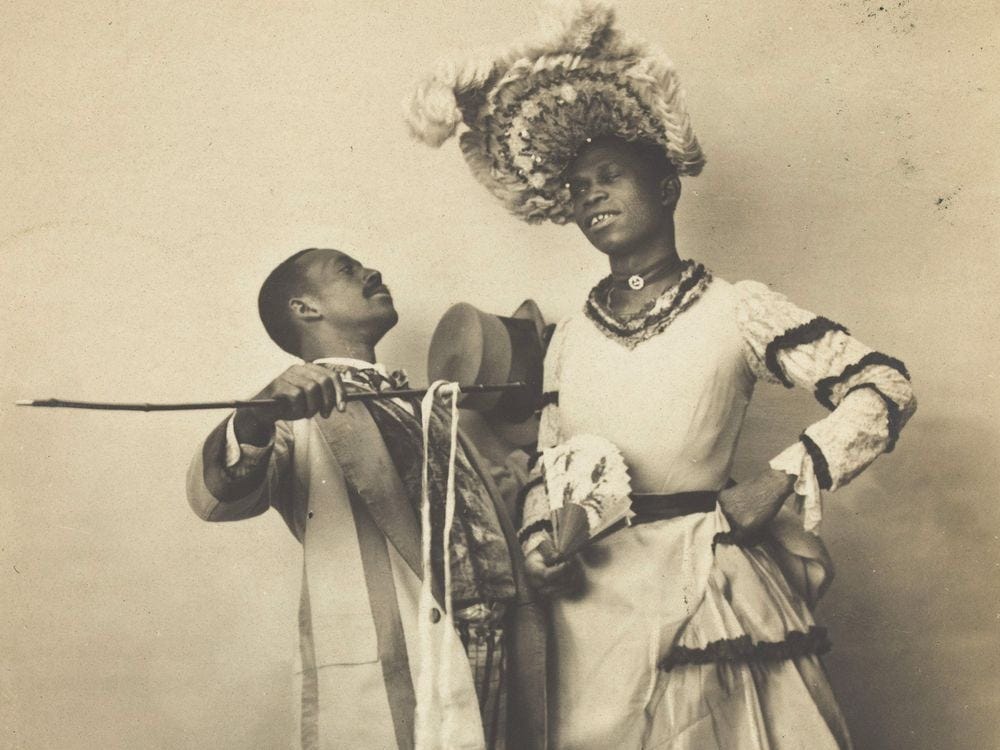Black History is Drag History
From Slavery to Voguing: The Activism of William Dorsey Swann, Queen of Drag

As politicians try to erase the existence of trans and queer people, I thought it important to highlight the importance of drag and the history of Black liberation. Hopefully, we know the importance of Marsha P. Washington in the fight for gay liberation, by starting the Stonewall Riot and sparking modern gay liberation. You can’t write about Black liberation history without drag history or more specifically, Washington D.C. drag balls.
William Dorsey Swann was born into slavery in 1858. He would become not only a pioneer in the world of drag but a civil rights leader at the intersection of Black life, the world of drag, and LGBTQ activism. Swann was known as the "Queen of Drag," Swann organized some of the earliest documented drag balls in Washington, D.C. These events were more than just about self-expression and community for Black and LGBTQ+ people
While doing research for my true crime podcast (about a white man preying on Black drag ball performers) I found the work of Channing Gerard Joseph and this great Ted Talk. Joseph's a queer author and historian at Columbia (currently visiting prof at Princeton). Joseph traced the roots of drag and its child, ballroom, or ball culture back to Washington, D.C. of the 1880s. And according to Joseph, essentially, drag was founded in protest against homophobia and racism by Swann, the first American queer activist.
One of the earliest known drag balls was organized in 1869 at Harlem's Hamilton Lodge No. 710 as a masquerade charity gala. Both men and women dressed in clothes worn by the opposite sex. These events became popular with the mainstream, which brought about police harassment and eventually anti-crossdressing laws.
We don’t know when Swann threw his first D.C. ball but we do know Swann's activism began in 1888. That’s when he was arrested during one of his drag balls, held at a house on L Street, Washington, D.C. The police raid, targeted Swann's 30th birthday celebration. He was arrested along with 12 other men. They were charged with "being suspicious characters," a coded accusation of prostitution, despite the lack of evidence.
Swann made a cause of protesting new laws that were being enacted at the time that made dressing as the opposite sex illegal. This was new to the Victorian era. This was the same time that voting rights were being taken away from former slaves. Sound familiar? William Swann became the first documented person to proclaim himself a queen of drag, or simply, THE QUEEN (take that Queen Victoria). Swann and his cohort were most protesting the actions of racist D.C. police.
Following his arrest, Swann made history by appealing to President Grover Cleveland for a pardon. That right there made him the first American to take legal and political steps to defend the LGBTQ community. This bold move marked Swann as a pioneer in LGBTQ rights, decades before the Stonewall riots. Black people at the turn of the 20th century went to drag balls en masse in part as a protest against the police. Drag balls reached their apogee during the Harlem Renaissance with prominent balls in from Harlem to Los Angeles.
Drag culture went underground in part because of increased police harassment, but it never went away. The drag houses that are known from the documentary Paris is Burning (the whole film is on YouTube!) were formed in the 1960s. It wouldn’t be much longer before RuPaul dawned a wig in Atlanta in the 70s. I attended my first New York drag balls in the early 1990’s. If I’d only known that I was part of queer and black liberation history.
Thank a drag queen for your freedom this Black History Month.



